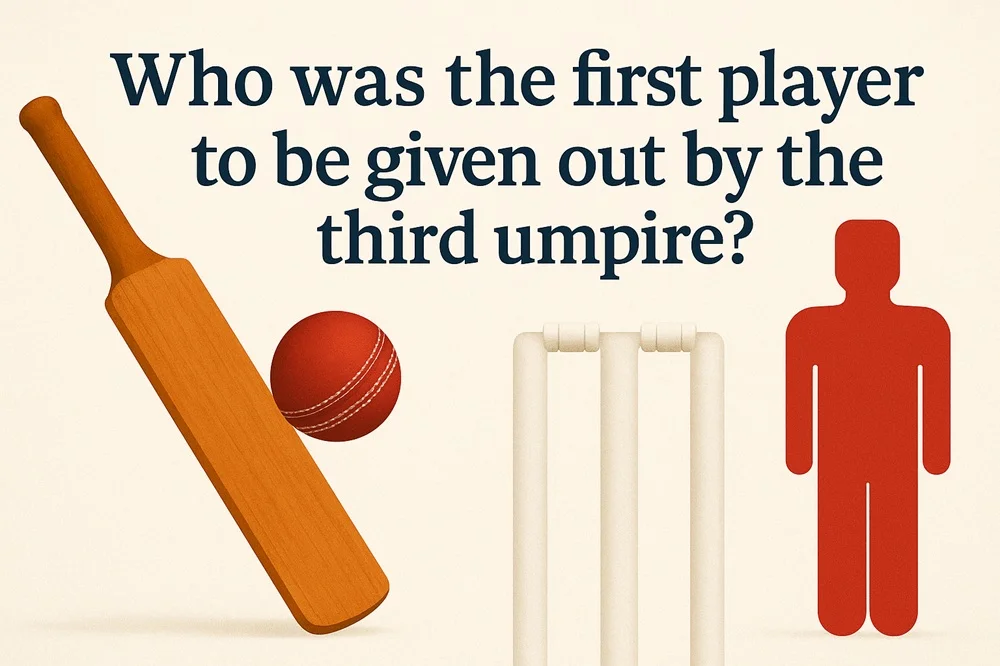
Cricket is a game steeped in tradition, but over the decades, technology has slowly made its way into the sport, reshaping how it’s played, watched, and adjudicated. One of the most significant technological advancements in the game was the introduction of the third umpire, a move that changed how close decisions were made. The third umpire system was first implemented in the early 1990s to aid on-field umpires in making better judgments on tight calls — particularly run-outs. The first cricketer to be adjudged out by this new system holds a unique place in cricket history.
The Historic Moment: Sachin Tendulkar and the Third Umpire Decision
The player who became the first cricketer to be given out by the third umpire was none other than India’s Sachin Tendulkar, one of the game’s all-time greats. This historic event took place during the second Test match between India and South Africa at Kingsmead, Durban, on 14 November 1992.
Context of the Match
The Indian team was touring South Africa for a historic series — the tour marked India’s return to South Africa after the country was reinstated into international cricket following the end of apartheid. This was a significant series for both nations.
During India’s first innings in the second Test at Durban, Tendulkar, still early in his illustrious career, was at the crease. He had already made a mark in international cricket with his incredible batting skills and was rapidly becoming one of the most promising talents in world cricket.
The Run-Out Incident
Tendulkar was batting confidently when the moment of decision came. In an attempt to take a quick single, he responded to a call from his batting partner, but the South African fielder Jonty Rhodes, known for his exceptional agility and fielding brilliance, swooped in and unleashed a rocket throw towards the stumps.
The throw was sharp, and the bails were dislodged as Tendulkar tried to make it to the crease. The on-field umpires were unsure and turned to the newly introduced third umpire system — a revolutionary move at the time. The third umpire for that match was Karl Liebenberg of South Africa.
After reviewing the footage, Liebenberg judged that Tendulkar was short of the crease, and declared him run out. The decision was signaled by a red light — the first time such technology was used in international cricket to determine a dismissal.
A Landmark in Cricketing History
This moment was a landmark in cricket history. It showcased how television replays and technology could assist umpires in making critical decisions. Until then, such run-out calls were made solely on the field, often with limited visibility and human error in play.
Although it was a frustrating dismissal for Tendulkar and his fans, it was a watershed moment for the game. Since that match, the use of the third umpire has expanded to include other decisions like stumpings, catches, boundary checks, and more.
The Evolution of the Third Umpire System
What started in 1992 as a tool to assist with run-outs has now evolved into a full-fledged Decision Review System (DRS), introduced formally in 2008. The third umpire now uses UltraEdge, ball-tracking, Snickometer, and hotspot technology to assist in close calls, including LBWs, edges, and catch verifications.
In the modern game, both teams can challenge on-field decisions using limited reviews, bringing strategy and precision into play. While the system is not without criticism, it has significantly increased the accuracy of umpiring decisions.
Why This Moment Still Matters
The dismissal of Sachin Tendulkar by the third umpire was more than just a run-out; it was a defining point in cricket’s embrace of technology. It symbolizes the sport’s willingness to evolve and maintain fairness in the face of increasing competitive pressures.
Today, with hundreds of matches involving multiple camera angles, slow-motion replays, and real-time tracking systems, it’s easy to forget how groundbreaking that first third umpire decision was.
Key Facts Recap:
- Date: 14 November 1992
- Match: India vs South Africa, 2nd Test, Kingsmead, Durban
- Dismissed Batsman: Sachin Tendulkar
- Mode of Dismissal: Run Out
- Fielder: Jonty Rhodes
- Third Umpire: Karl Liebenberg
- Technology Used: TV replay, basic broadcast footage
- Outcome: Tendulkar was the first player ever to be given out by the third umpire
Conclusion
Technology in cricket has come a long way since 1992, and the story of Sachin Tendulkar’s historic dismissal remains an important chapter. It marks the beginning of a new era — one where accuracy, fairness, and innovation take center stage. As the game continues to modernize, moments like these remind us how each step forward shapes the future of the sport.







